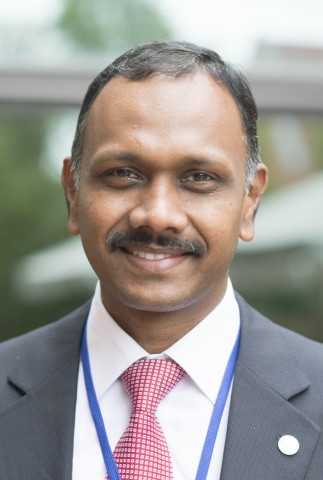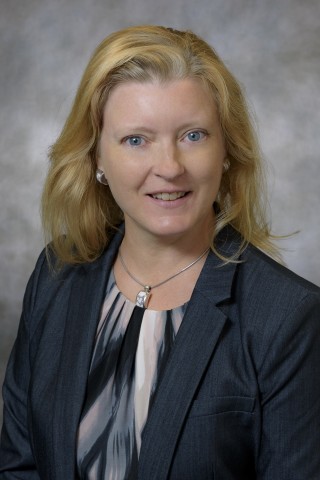Improving community and population health is in the core mission statement of many medical schools. However, physician training happens within the same system that has led the United States to disproportionately spend on its healthcare system. While wealthy countries like the U.S., tend to spend more per person on health care and related expenses than lower income countries. However, the U.S. spends more per person on health than comparable countries. Health spending per person in the U.S. was $10,224 in 2017, which was 28% higher than Switzerland, the next highest per capita spender. The all-encompassing social determinants of health, politics, and vested financial interests heavily influence policies affecting population health. It would be useful for us to take a moment reflect upon the problem.
The numbers like 18% GDP spent on U.S. healthcare and low ranking on outcomes among developed countries are widely published facts. It is deeply disturbing to see the UNICEF report card that places United States at the 20th position out of 20 rich countries on overall childhood wellbeing. This is despite evidence to suggest that adverse childhood experiences can greatly impact adult health. It is quite possible that many physicians and healthcare leaders and certainly students are not even aware of facts like these. Currently, an inordinate amount of effort in healthcare is focused on “fixing” acute problems. Especially in the backdrop of 10,000 people turning over 65 years each day and an epidemic of rapidly rising number of people with multiple chronic conditions, it is imperative to address chronic conditions and preventative care.
Discussions of attribution for suboptimal outcomes of the US health care system commonly focus on issues of policy and funding. Increasingly, however, the medical education community is contemplating its accountability. Several aspects of traditional medical education may impede downstream performance in the health care system. Although any physician would assert the importance of life-long learning, the traditional 2+2 educational model, with the first two years of medical school devoted predominantly to the classroom and a heavy emphasis on knowledge testing, sends a message that there is a discrete body of knowledge to be mastered before a trainee can move on to the “real world” of care delivery. This separation of formal learning from work experience does not prepare future physicians for the challenges of identifying one’s learning needs in real time and protecting time and effort to address those needs. Clinical education remains situated in the inpatient environment despite the fact that most care occurs in an outpatient setting. This results in a focus on high-acuity interventions, with little emphasis on managing chronic conditions.
The residency match process has become more complex for both applicants and programs, resulting in a disproportionate emphasis on knowledge scores at the detriment of other competencies critical to success as a physician. Individual accomplishment continues to be prized to gain admission to medical school and to residency, leading to an orientation toward individualistic, competitive traits over team work. Finally, there has historically been little effort to explicitly train students or residents in the structure and function of the health care system. It has been assumed that such knowledge evolves from clinical experiences, however if those experiences occur in a system that is functioning poorly one can learn no better. The celebration of the 100th anniversary of the Flexner report at the turn of the 21st century prompted reflection on these issues, and spurred efforts to realign medical education with the realities of current practice. As discussed below, several exciting educational trends are underway to tackle these challenging issues.
Health systems science (HSS) is a term coined by members of the Accelerating Change in Medical Education consortium sponsored by the American Medical Association. Encompassing diverse domains such as systems-thinking, quality, patient safety, social determinants of health, policy, leadership and more, HSS has been promoted as the third pillar of medical education, complementing basic science and clinical education. In a December 2018 Academic Medicine editorial, David Sklar postulated that HSS training may be an emerging marker of excellence among medical schools. Several exemplars have risen in the past few years, and systems training aimed at students has demonstrated immediate impact on the affiliated health systems. At Penn State College of Medicine, first year students are trained as patient navigators, learning about elements and members of the health care system while making a meaningful contribution to the experience of the patient and family. At Eastern Virginia Medical School, the students learn about the social determinants of health, and high value and person-centered care through use of virtual families. At East Carolina University Brody School of Medicine, the relationship is much more direct: a faculty development program undertaken to prepare faculty to teach HSS to students immediately impacted the clinical practices of those faculty members. In all institutions implementing training HSS, students act as change agents as they complete their clinical assignments, sharing their newly minted knowledge with residents and faculty. Many of these value-added roles created for students draw upon in outpatient experiences, improving provider awareness of chronic care needs and social determinants of health. The ACGME also designates training in systems-based practice as an expectation of residency programs. Health systems leaders have come to recognize the power of such training, and some institutions are making deliberate efforts to align student and resident educational projects with identified needs of the system and with the continuing certification needs of practicing physicians.
Becoming a physician demands exceptional learning ability, yet data suggests that many practicing physicians fail to implement evidence-based guidelines for care. Why is it that physicians struggle to stay current? Learning strategies that have traditionally led to medical school success were focused on the absorption and regurgitation of knowledge delivered by professors and texts. Such practices do not prepare physicians to weave learning into their hectic daily practice of care delivery. The Master Adaptive Learner model has emerged to explicitly train students and residents in a cycle of self-regulated learning. Placing students into more active, team-based learning formats, as well as meaningful clinical roles, within the first weeks of medical school forces students to begin this process of integrating learning and work. At Vanderbilt University School of Medicine, new course structures in the post-clerkship phase expect students on clinical rotations to identify learning needs and delve into basic science concepts arising in the course of patient care. The ACGME has codified the competency domain of Practice-based Learning & Improvement for residents; in the realm of continuing medical education, point-of-care learning and micro credits have arisen. All of these activities support the vision of a dynamic, learning health care system in which all learners work, and all workers learn.
In an effort to assure that educational outcomes align with the needs of patients and populations, educators have adopted the concept of competency-based medical education (CBME). Fundamental principles of CBME include: medical education needs to be based on the health care needs of the patient population; the focus of training needs to be on desired outcomes for learners; and there should be a seamless continuum of education, training and practice. CBME acknowledges that competency development can arise from various sources and at varying paces among learners. This calls for personalized learning pathways aligned with identified developmental needs, ensuring that each learner is optimally prepared for their role in the system. Greater attention is being devoted to assessing the readiness of each graduate for the responsibilities of internship. Medical schools are placing greater emphasis on domains beyond medical knowledge, such as Professionalism, and Communication & Inter-personal Skills, thereby elevating competencies that are equally essential to success in the context of the health care system. Systems receiving these competency-driven graduates can expect improvements in inter-professional team performance and patient outcomes and satisfaction.
By reflecting upon current challenges of health care systems, medical educators are implementing an upstream approach. Novel educational content and processes that are being implemented now will position future physicians to drive necessary changes in the health care system. Benefits to the system are evident even during the process, validating the role of educational innovation as a catalyst for health care transformation. The time has come to refer to medical students as “now” of healthcare instead of “future” of healthcare.
Did you know that the Harvard Macy Institute Community Blog has had more than 185 posts? Previous blog posts have explored topics including health systems science, medical education and global health, and developing a global competency framework for universal health care.
Author BIOS

Senthil Kumar Rajasekaran, MD, FCP, FAcadMed (Leaders ’13; Assessment ‘14) is a medical educator. Senthil currently holds a position as Associate Dean for Academic Affairs at Eastern Virginia Medical School. He served as a member of the World Health Organization working group to develop a global competency framework for universal health coverage. Senthil’s areas of professional interest include innovative curriculum design, learner assessment and educational continuous quality improvement. Senthil can be followed on LinkedIn or Twitter, or contacted via email .

Kimberly D. Lomis, MD (Educators ’08; Leaders ’12; Assessment ’14) is a medical educator and surgeon. Kim currently holds a position as Vice President of Undergraduate Medical Education Innovations at the American Medical Association. Kim’s areas of professional interest include competency-based medical education, systems thinking and complex change management. Kim can be followed on Twitter.

Susan E. Skochelak, MD, MPH is a medical educator and Family Medicine/Public Health physician. Susan currently holds a position as Chief Academic Officer at the American Medical Association. Susan’s areas of professional interest include health system science, education across the continuum and competency based medical education. Susan can be followed on LinkedIn.
HMI Staff


